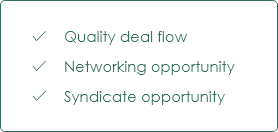Talking to investors can be frightening, but it doesn't have to be. Investors' questions are not hard and difficult to answer, and you can predict them and be well prepared ahead. If investors think they know more about the industry than the founder, it will raise an immediate red flag. However, most investors will ask you key questions about your startup that you should be fully aware of, such as the market size, team, product, go-to-market, and the plans for the next round of financing.
Market Size
When it comes to market sizing, please don't assume the investor knows the market you're pitching, you as the entrepreneur need to elaborate and paint the picture for them. When Lyft got started, it was a company called Zimride, which was a long-distance ride-sharing company. When they wanted to size their market, they looked at their startup as a proxy for the taxi industry, but they also argued with investors that their product of on-demand ride-sharing service was in a market that will be disrupted and still didn't exist today because the taxi market only shows people who end up ordering cabs considering the whole inconvenience.
Team
After the market size, you must address the penetrating question in the investor's mind: why invest in you and your team if there's probably other entrepreneurs looking to tackle the same problem? What makes you, as a person uniquely qualified to tackle the market? Relate your prior accomplishments and experiences to the startup you're pitching.
Product
In addition to the team, you need to address how the product is 10x better or cheaper than the alternative. The products you offer must fill a gap in the market or solve a pain that often did not exist before your revolutionary product. Startups won't survive if they are only a little better than what already exists in the market – the product must represent a breakthrough in the industry.
Go-to-Market
After you discuss market size, team, and the product, walk the investors into your go-to-market strategy. How will you acquire the customers, and how does the business model support customer acquisition profitability? Okta is a software that allows companies to save their login information in one Okta portal for a seamless login. Their initial go to market strategy was to sell to Small to Medium Enterprises (SMEs) because they believed that SMEs would adapt to new technologies easier. But after they launched, they realized that it was the large businesses that needed their solution the most as they had more Software as a service (SaaS) login information across hundreds of employees rather than SMEs. Okta was later acquired and is now a $5 billion public company.
Future
Lastly, every investor wants to see that you have a plan for the next milestones you aim to accomplish, and you should clearly articulate the milestones you expect to achieve with the money that you are seeking. The milestones you set out for the current round should give you the roadmap to open your next round (after achieving your milestones) at a minimum of double the current round.
Talking to investors can be scary at first, but pitching a couple of times, attending investors' network events, and being well prepared will help you close your rounds faster.




